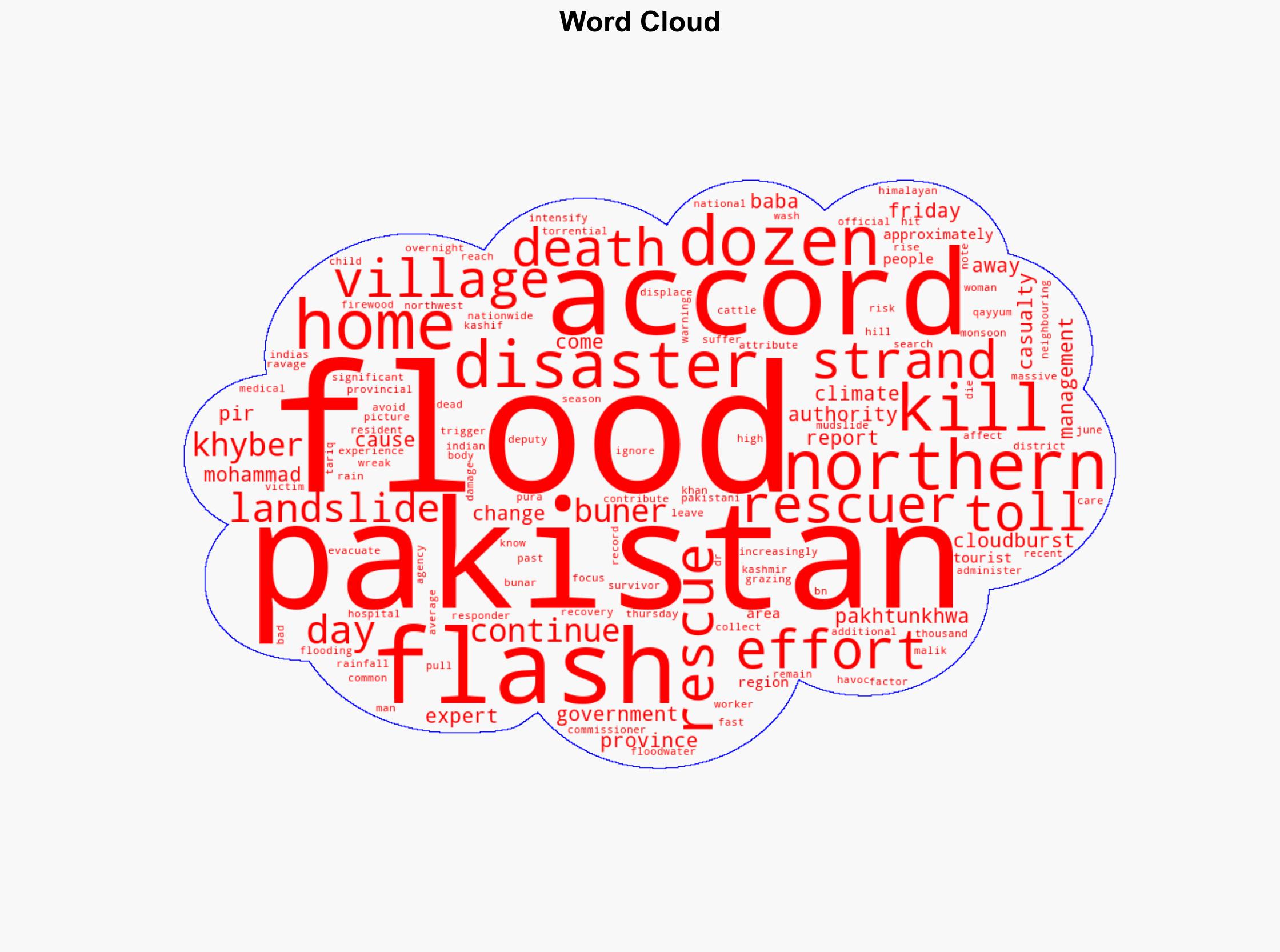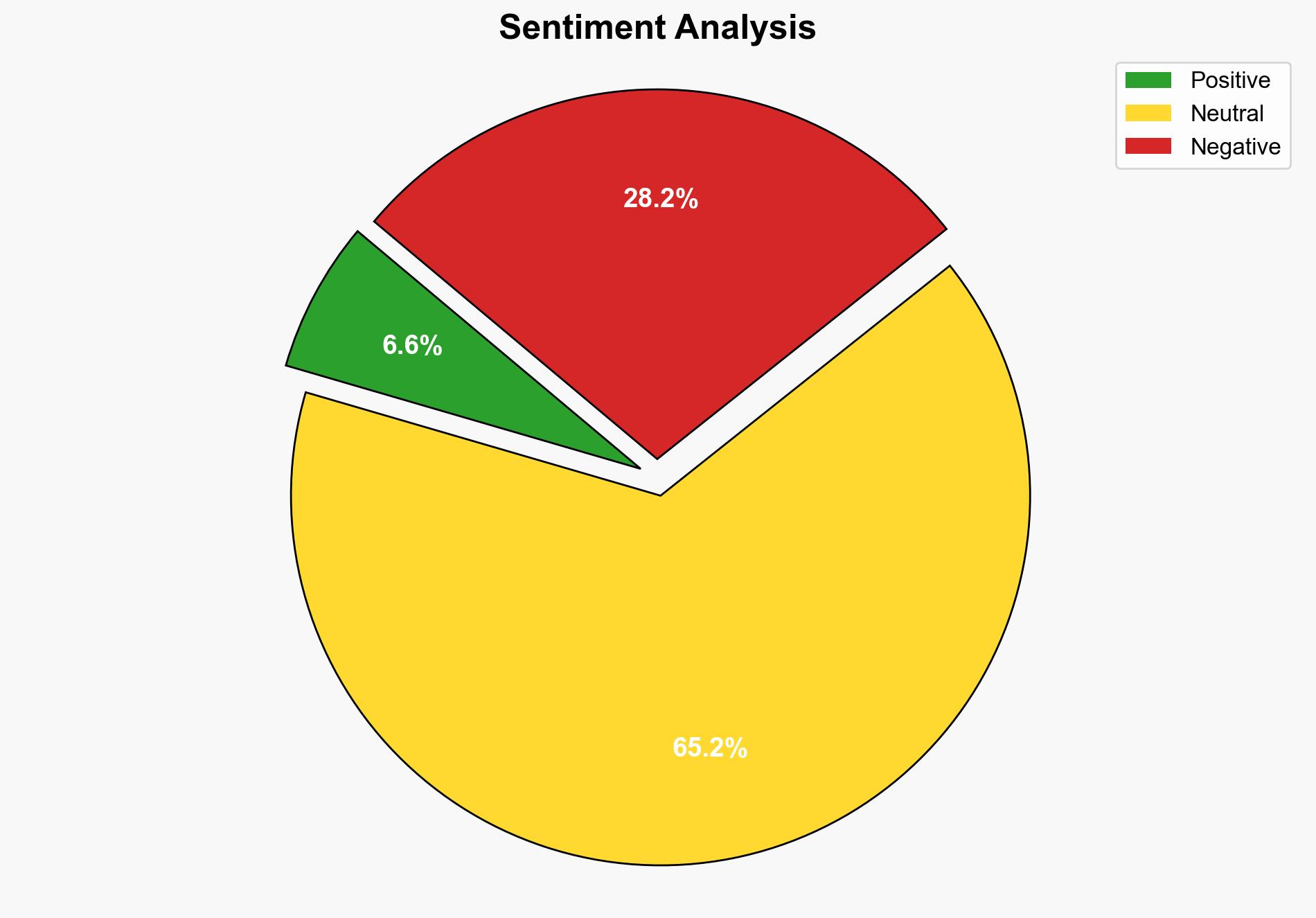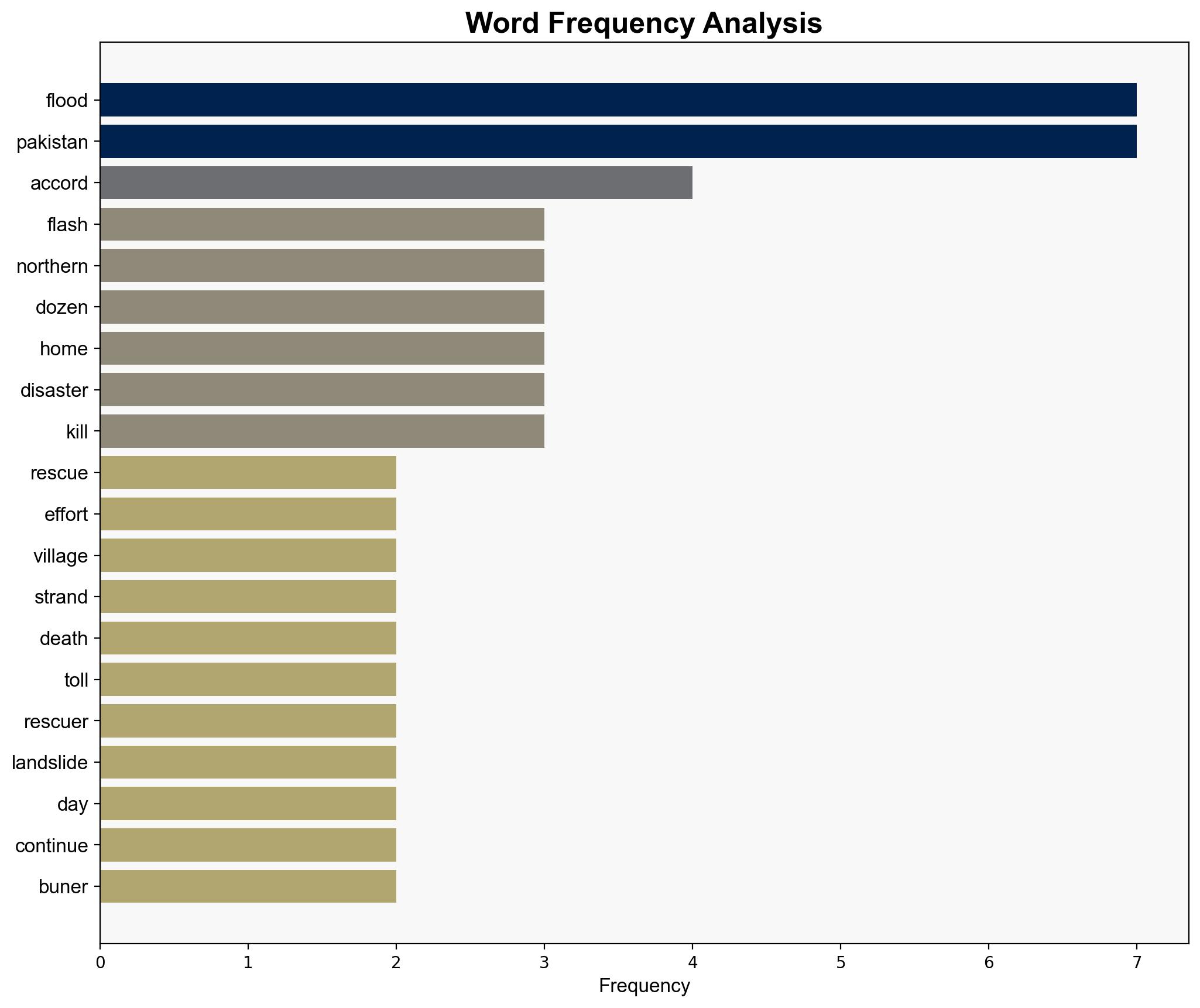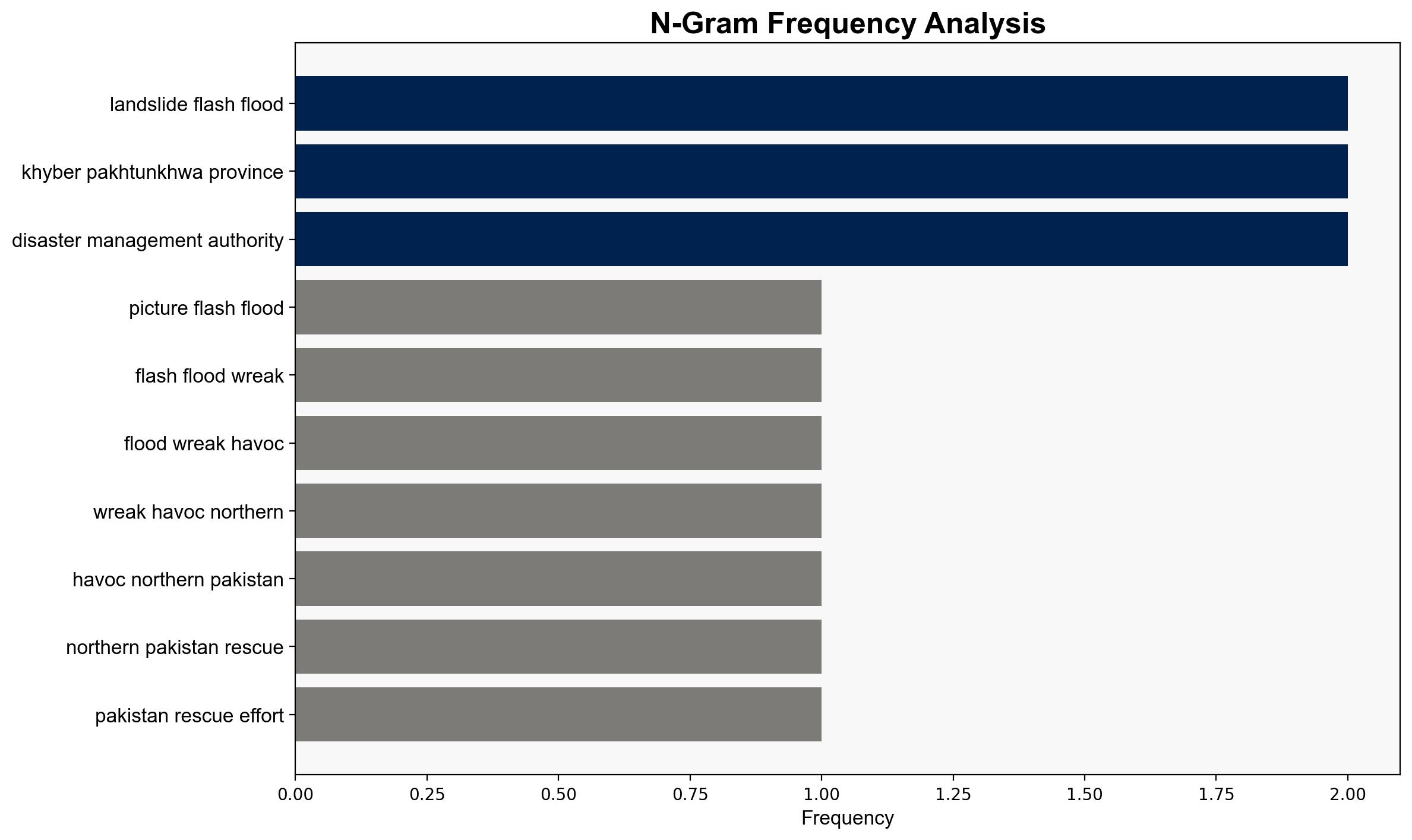Flash floods wreak havoc in northern Pakistan – Al Jazeera English
Published on: 2025-08-16
Intelligence Report: Flash floods wreak havoc in northern Pakistan – Al Jazeera English
1. BLUF (Bottom Line Up Front)
The most supported hypothesis is that climate change is a significant factor contributing to the increased frequency and intensity of flash floods in northern Pakistan. This conclusion is drawn with a moderate confidence level due to the alignment of observed weather patterns with climate change projections. It is recommended to enhance regional disaster preparedness and international cooperation on climate adaptation strategies.
2. Competing Hypotheses
1. **Climate Change Hypothesis**: The increase in flash floods is primarily due to climate change, which has led to more frequent and intense rainfall events in the region.
2. **Infrastructure and Policy Hypothesis**: The severity of the floods is exacerbated by inadequate infrastructure and ineffective disaster management policies, rather than solely by climate change.
Using the Analysis of Competing Hypotheses (ACH) 2.0, the Climate Change Hypothesis is better supported. The evidence of increasing rainfall intensity and frequency aligns with global climate change models, while infrastructure issues, although present, do not fully account for the scale of the disaster.
3. Key Assumptions and Red Flags
– **Assumptions**: It is assumed that climate change is the primary driver of increased rainfall. Another assumption is that local infrastructure is insufficient to handle extreme weather events.
– **Red Flags**: The potential underreporting of infrastructure failures or policy inadequacies could skew the analysis. There is also a risk of confirmation bias in attributing all environmental changes to climate change without considering other factors.
4. Implications and Strategic Risks
The ongoing pattern of severe weather events poses significant risks to regional stability, including economic disruption, population displacement, and potential political unrest. The increased frequency of natural disasters could strain government resources and international aid, leading to long-term socio-economic challenges.
5. Recommendations and Outlook
- Enhance early warning systems and community-based disaster preparedness initiatives.
- Invest in resilient infrastructure capable of withstanding extreme weather conditions.
- Foster international collaboration on climate adaptation and mitigation efforts.
- Scenario Projections:
- Best Case: Successful implementation of adaptive measures reduces future flood impacts.
- Worst Case: Continued environmental degradation leads to more frequent and severe disasters.
- Most Likely: Gradual improvements in disaster response, but challenges persist due to climate variability.
6. Key Individuals and Entities
– Kashif Qayyum
– Mohammad Khan
– Dr. Mohammad Tariq
7. Thematic Tags
national security threats, climate change, disaster management, regional focus




